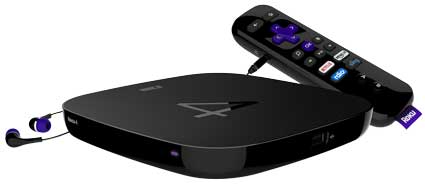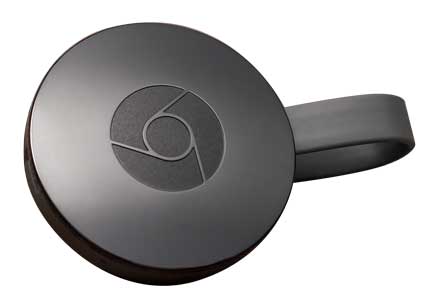
[dropcap]Is[/dropcap] there anything we love to hate, or hate to love, more than cable television?
It wasn’t always this way. Cable started out as an affordable service we were happy to have with a manageable range of options. When did it all go so wrong? When did cable companies pull a Walter White, transforming from a reliable, slightly bumbling but benign service to a behemoth of pure evil we can’t seem to do without? (See? Without cable, we couldn’t have had that analogy at all.)
In the ’90s and early 2000s, cable had us all in its tentacle grasp. Where else was there to turn for quality television and films? It didn’t take long for cable companies to clue in, and take viewers for all they were worth. Would you like, for example, the National Geographic channel for its documentaries? Are you addicted to the real-life treehouse of horror that is TLC? Sure, you can have them. But only if you pay an extra $10-$15 per month for the “Adventure-Time Package,” which also might include about 20 channels of Spanish QVC. By the time viewers build a package of channels they might actually, you know, watch, the costs can reach breathtaking heights, especially when promotional offers expire and customers find themselves trapped under cancellation contracts and fees. To get the 30 channels people want (and the 230 they don’t), equipment rental also figures into the total cost of skyrocketing cable bills. Is it any wonder that in the span of a couple of decades, cable companies have become the most hated arch-villains in the nation? THEY ARE THE ONES WHO KNOCK … but maybe not for long.
Toward the end of the last decade, online streaming as we know it today made its popular debut. Beginning most famously with Netflix streaming, customers could access an impressive catalog of shows and movies through their wireless internet connection. Around the same time, more companies and channels began offering online streaming of their content as well, leaving many customers to wonder if they really did need to buy five versions of the Baboons Eating Fruit channel to get their documentary fix.
In the past few years, streaming entertainment has officially arrived. The variety of online television and movie choices paired with a deluge of streaming devices means more people have the choice to not answer when cable knocks. And while the exact number of customers who are choosing to “cut the cord” is under debate, the increasing array of options is indisputable. Here is a Who’s Who lineup of the devices and services that can help you kiss the cable Cthulu goodbye.
Devices
 Apple TV ($149-$199)
Apple TV ($149-$199)
While Apple TV has been praised for its ease of use and its easy integration with other Apple services and devices, it offers a smaller selection of stand-alone channels/streaming apps than its competitors. This alone wouldn’t be a detraction if Amazon, Google Play and Vudu weren’t missing from the lineup; iTunes is the only recourse for purchasing new releases. Regardless, Apple TV still has a lot to recommend it, including a sleek interface design, an excellent remote and everyone’s favorite digital sass-mouth, Siri. And with the release of thousands of Apple TV apps recently, the device has the potential to be much more than simply a streaming receiver, and definitely will find favor with other heavy Apple users.
 Roku ($49-$129)
Roku ($49-$129)
Wee but powerful, the Roku was the first player on the streaming scene and continues to be a heavy hitter. Initially the brain child of Netflix, the Roku player hit the shelves in 2008 and has undergone several iterations since, each one better than the last. The device offers access to the big names in streaming services we’ve all come to be familiar with (including Netflix, Amazon Prime, Hulu, HBO Now and more) and continues to be the most popular streaming box in the United States. Roku also offers the most comprehensive lineup of channels and is a great bet for viewers who want to use a variety of different streaming options without being shoehorned into one particular service or platform.
 Fire TV ($99)
Fire TV ($99)
Amazon’s Fire TV comes with lots of perks, like a broad search interface and easy access to Amazon content, like Prime movies and television (Prime members only). However, the Amazon-heavy focus is a drawback for some as well. While services such as Netflix and Hulu are available on Fire TV, Amazon’s agenda is definitely to promote its own content. This being said, those other services are still available on the device, and for heavy users of Amazon Prime (including Prime music libraries), the Fire TV is an especially good bet. Amazon also offers a Fire TV stick ($39) that performs many of the same functions as the full set at a fraction of the price. Both come with access to Amazon’s competent Siri clone, Alexa.
 Google Chromecast ($35)
Google Chromecast ($35)
Google’s Chromecast is small, cheap and versatile. In addition to streaming traditional apps like Netflix, Chromecast also lets users screencast from their tablet, smartphone or PC, which can be especially useful for heavy online content users. Caveats to keep in mind include limited availability to stream Amazon offerings. While watching from the browser cast is possible, the dedicated Amazon Instant Video application is not available on Chromecast, making the Amazon viewing or listening experience subpar compared to a native app. Some users will also be saddened by the lack of remote control; Chromecast requires a mobile device or PC to be controlled. As far as bargain goes, however, Chromecast is leader of the pack.
Services
Netflix
($7.99-11.99/month)
Netflix is the O.G. when it comes to streaming, and continues to dominate other services with selection and popularity. Originally starting as a rent-by-mail service for DVDs (which it still offers), the service was the first to launch whole-heartedly into streaming services, which eventually outpaced DVD rentals. Content-wise, Netflix continues to have a solid selection of newer movies, classics and favorite TV shows, like Breaking Bad or It’s Always Sunny in Philadelphia. They definitely lead the pack in award-winning original programming as well, including House of Cards (we love to hate you, Frank!) and Orange is the New Black. And with the recent deal to be the exclusive carrier for all Disney movies made this year and beyond, as well as tons of other kiddo-friendly content, Netflix may be the best choice for family-friendly streaming.
Amazon Prime
($99/year, $10/month streaming only)
Not only do Prime members have access to an increasingly robust selection of free programming — including a healthy library of HBO shows, minus the current seasons — members also are able to take advantage of the numerous premium add-ons now available. These include major networks like Starz, Showtime and HBO, as well as more specialized content like Curiosity Stream (a documentary channel), Acorn TV (for lovers of British television and mysteries) or History Vault (shows from when the History Channel was actually about, well, history). Season passes for many current shows, while potentially costly, allow the option to keep abreast of most series you might not be able to find elsewhere outside a cable subscription. In addition, as many users already know, Prime benefits go well beyond streaming video to free two-day shipping, music streaming, file storage, eBook borrowing and more.
Sling TV
($20/month, base)
All hail Sling TV as the first true internet-only alternative to cable. This is not to say that you can get everything on Sling you could get with a traditional cable subscription, but the choices are still impressive. Sling keeps adding to its lineup of live TV offerings, including CNN, HGTV, AMC, History, FX and more. Sling may be the only option to get your sports fix as well – it’s currently the only service offering access to ESPN and ESPN2. For multi-room viewers, there is a multi-stream option now, although be aware: network beefs between ABC and Fox mean you can have ABC channels (like ESPN or the Disney Channel) or Fox Channels (like Fox Sports or National Geographic), but not both. Most channels, however, are conflict-free and available under either plan. Add-ons like HBO or more Spanish-language channels are available. The best part compared to cable? Zero contract or termination fees.
HBO Now
($15/month)
Some readers may wonder why anyone might need HBO Now when Amazon Prime offers such a long list of HBO’s heavies (Omar comin’!). The first of the big cable premiums to go a la carte, HBO’s standalone streaming app allows users up-to-date access to (pretty much) its entire catalog, including latest episodes of current series; the Amazon Prime access only offers certain shows, albeit a good selection, and never current seasons. At $15/month, it’s one of the most expensive streaming options out there, but let’s face it: it’s hard to be a fan of good television and not return time and again to HBO. They give us hope for the future of television, and HBO Now is totally worth it. Our only complaint: Where is Tales From the Crypt already?
Hulu Plus
($8/month)
If you need the latest network sitcom episode, Hulu may be your go-to. Although some networks delay releases of recent episodes in a half-hearted effort to keep viewers tuned in live, Hulu still has one of the best selections of network favorites, past and present. Like Netflix, the service is also branching out into its own original content (a recent adaptation of Stephen King’s 11/22/63, for example). Unlike Netflix, its catalog of movies is unimpressive, with the exception of access to some 900 films from the Criterion Collection — definitely a decent consolation prize for classic film buffs.
![Lady-shutterstock_102236539-[Converted]](https://b1523572.smushcdn.com/1523572/wp-content/uploads/2016/06/Lady-shutterstock_102236539-Converted.jpg?lossy=1&strip=0&webp=1)
When to Keep the Cable Romance Alive
“Cutting the cord,” as it’s called, isn’t for everyone. While almost all services and devices are extremely easy to set up, those with little or no technology experience may prefer the worry-free cable experience. The same goes for sports fans: without cable, most will be out of luck. While Sling offers ESPN and ESPN 2 (if you don’t want Fox channels), you’re still going to miss out on a lot of local games. Turning to league-specific streaming won’t help, since many local games are blacked out. News junkies can get CNN through Sling, but that’s about it; if you need all the news channels during election year, streaming might not be for you. And finally, if you’re just a fan of good old-fashioned channel surfing, adjusting to the streaming interface will be difficult indeed.






















 Apple TV ($149-$199)
Apple TV ($149-$199) Roku ($49-$129)
Roku ($49-$129) Fire TV ($99)
Fire TV ($99) Google Chromecast ($35)
Google Chromecast ($35)